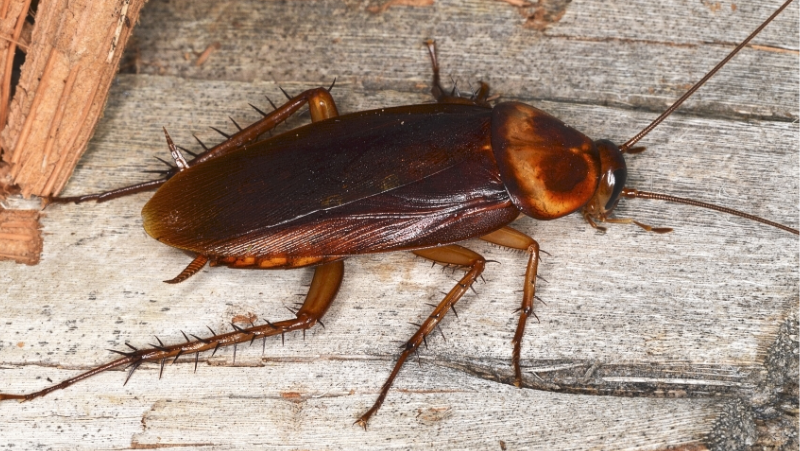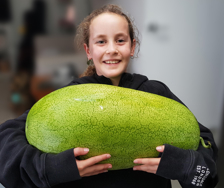Yates Account
Join now
Create a Yates account today!
Sign up to join the Yates Garden Club for monthly e-mails packed with seasonal inspiration, tips for success & exclusive promotions.
Plus if you’re a Garden Club member you can take part in the Yates Growing Community - a blog to share successes, get advice & win prizes in fun challenges along the way!

Forgot password
Enter the email address associated with your account, and we'll email you a new password.
Blattodea

What are Cockroaches and how to get rid of them
Various introduced cockroach species can be a persistent burden and a real danger in the home. Cockroaches leave behind mess, produce foul smelling odours and ruin fabrics and other household items. Cockroaches sometimes carry abhorrent infectious human diseases and worm parasites. The American cockroach (Periplaneta Americana) has been known to transmit these diseases as they travel from sewers and onto food preparation areas such as the kitchen and outdoor barbeque. Some people are allergic to cockroaches and the material(s) they leave behind, triggering conditions such as asthma and dermatitis.
Cockroaches are highly successful insects due to their ability to survive on a very wide variety of food sources. They are also prolific and fast reproducers. For example, the German cockroach (Blatella germanica). One female German cockroach can lay up to 240 eggs in her 200-day lifetime, that’s about 440 eggs per year. If each of her offspring reproduce, within a year, in theory a population can grow into the many hundreds of thousands!
Given the risks, nuisance and the alarming rate cockroach infestations can quickly develop, it’s very important to prevent cockroaches and control them in the home as early as they have been identified.
It’s important to note, there are many native cockroaches in New Zealand and thankfully, none of them are invasive pests. Native cockroaches are mostly beneficial insects which create tunnels in the soil and feed on decomposing wood, pollen and leaves.
Description
Cockroaches come in various colours such as blacks, browns and yellows, some have distinct patterns and markings. Cockroaches are long, wide and heavily segmented with a flattened oval body shape. While the head is easily identified, the middle section (thorax) and the hind section (abdomen) are less distinguishable.
The head is triangular shaped with the mouth at the lower side and two large compound eyes at either side of the head. Attached to the head are a pair of long flexible antennae that wave independently to sense their environment.
Behind the head is the first segment of the middle section (thorax) known as the prothorax. In cockroaches, this segment is quite pronounced and is a rounded trapezoid shaped plate.
Behind the prothorax, on the upper side of the body, some cockroaches have a pair of leathery wings which protect the large hind wings. At rest, wings fold back in line with the body for further protection. However, having wings depends on the species and is often reserved for males. Attached to the underside and middle section of the body are three pairs of outward-facing spined legs.
At the end of the body are a pair of spike-like appendages (cerci). Females cockroaches sometimes carry an egg case (ootheca) at the tip of their abdomen until eggs are ready to hatch.
Behaviour
Cockroaches are mostly active at night and generally hide throughout the day. If cockroaches are observed during the day, this could be the sign of a major infestation. Cockroaches are active throughout the year with peak season during the warm summer months.
Cockroaches are fast moving, can traverse vertical and horizontal surfaces, run away when exposed to light, and sometimes fly. Cockroaches are social insects with many preferring to live in groups.
Cockroaches use their faeces, sometimes mixed with a pheromone, to attract mates and mark out feeding and shelter areas. This produces a foul-smelling odour and unsightly mess.
Lifecycle
Eggs are laid in an egg case (either deposited or carried by the female). Nymphs resemble the adults but are smaller and lighter in colour. Nymphs go through several moults before maturing to the adult stage, with adults generally live for about a year. Cockroach reproduction is favoured during warmer weather and when there is an abundance of food and water. It is important to be vigilant of cockroaches during the warmer months and to prioritise cockroach prevention in and around the home.
Habitat
Cockroaches are attracted to areas where food and/or water is available. Cockroaches feed on human foodstuffs, cardboard and other papery material, products containing starch such as building materials and laundry starch, stained or dirty fabrics, leather and rubber, human and animal faeces and blood, toe/finger-nail clippings, dying and dead cockroaches, and any material produced by a cockroach such as moults and faeces.
Cockroaches prefer warm, humid and sheltered areas. Most prevalent infestations occur in high density living such as in apartments and city areas. Commonly found in the kitchen, bathroom, toilet, garage and outdoor areas.
During the day, cockroaches hide in areas such as:
- cracks in walls
- near or in electrical appliances
- below sinks
- around water heaters
- drains
- door frames
- furniture
- grease traps
- roof voids
- in cardboard boxes and other papery material
- gardens
- compost bins
- rubbish bin
- animal houses such as kennels and chicken coups
Natural enemies
Spiders, insects, parasitoid wasps (see beneficial wasps), lizards, frogs, birds and mammals.
Best treatment for Cockroaches
Apply a surface barrier spray/dust with kill and control properties. Barrier sprays/dusts help to discourage cockroaches from entering the home. NOTE: the effectiveness of chemical control may be limited by poor hygiene.
Spray surfaces of walls, cupboards, behind sinks and other fittings and especially into cracks and crevices with Blitzem! IndoorOutdoor Barrier Spray Ready to Use to kill cockroaches on contact and provide a barrier of control for up to 2 - 3 months in and around the house.
When applying barrier sprays, it is important to note that cockroaches tend to aggregate in corners and confined spaces, and generally travel along the edges of walls or other surfaces.
Symptoms of Cockroach damage
Evidence of infestation includes:
- tiny faecal droppings
- smudges from regurgitated food and faeces, egg cases (ootheca) and shed skins (moults)
- foul-smelling odours in cupboards, or other sheltered areas
- damage to fabrics, clothing, shoes and various household items such as books.
What plants are impacted by Cockroaches
Cockroaches generally don’t bother plants but sometimes the introduced Australian Cockroach (Periplaneta australasiae) may feed on seedlings.
How to prevent Cockroaches appearing
Reduce available food:
- Keep food in sealed containers
- Clean outside of sauce bottles and jars
- Rinse food waste residues out of recyclable packaging
- Store toothbrushes in sealed containers. Cockroaches are attracted to the minty deliciousness of human and toothpaste residues!
- Dispose of rubbish regularly, especially before going to bed
- Ensure the house (particularly kitchen) is clean
- Clean under and inside appliances regularly
- Do not leave pet food out overnight
- Keep organic fertilisers in plastic sealed containers
- Avoid keeping cardboard inside or outside the home
Reduce available water:
- Repair leaky taps and pipes
- Remove unnecessary containers of water
- Keep the lid of the toilet closed, especially outdoor toilets
- Wipe up water on benches and in sinks
- Cover night-time drinking water or use a sealable bottle instead. Cockroaches have been known to crawl up the side of glasses of water and fall in.
Reduce areas which could provide shelter:
- Do not stack newspapers in the house
- Keep compost bins screened and away from the house. Try in-ground composting until the infestation has been adequately controlled.
Reduce entry points to a building:
- Repair holes, cracks and gaps in walls, skirting boards, window frames and door frames
- Install a door seal or door snake to the bottom of entrance doors
- Ensure flyscreens are fitted and maintained
- If possible, cover vents with a fine mesh
- If cockroaches are known to enter the house via drain-holes, try using a sink plug and covering drain holes with a thick mat when not in use
Protect seedlings:
On the very rare occasion plants are damaged, to protect freshly planted seedlings, cut the top and bottom off a clear 1.25 – 2L soft drink bottle, remove the label and place over the top of the seedling then wedge into the top 2 cm of soil. This will not only protect the seedling from the cockroach and various other pests, but will also keep the seedling warm, assist in directing water to the roots, and act as a barrier to wind and other physical damage.













Share
Share this article on social media